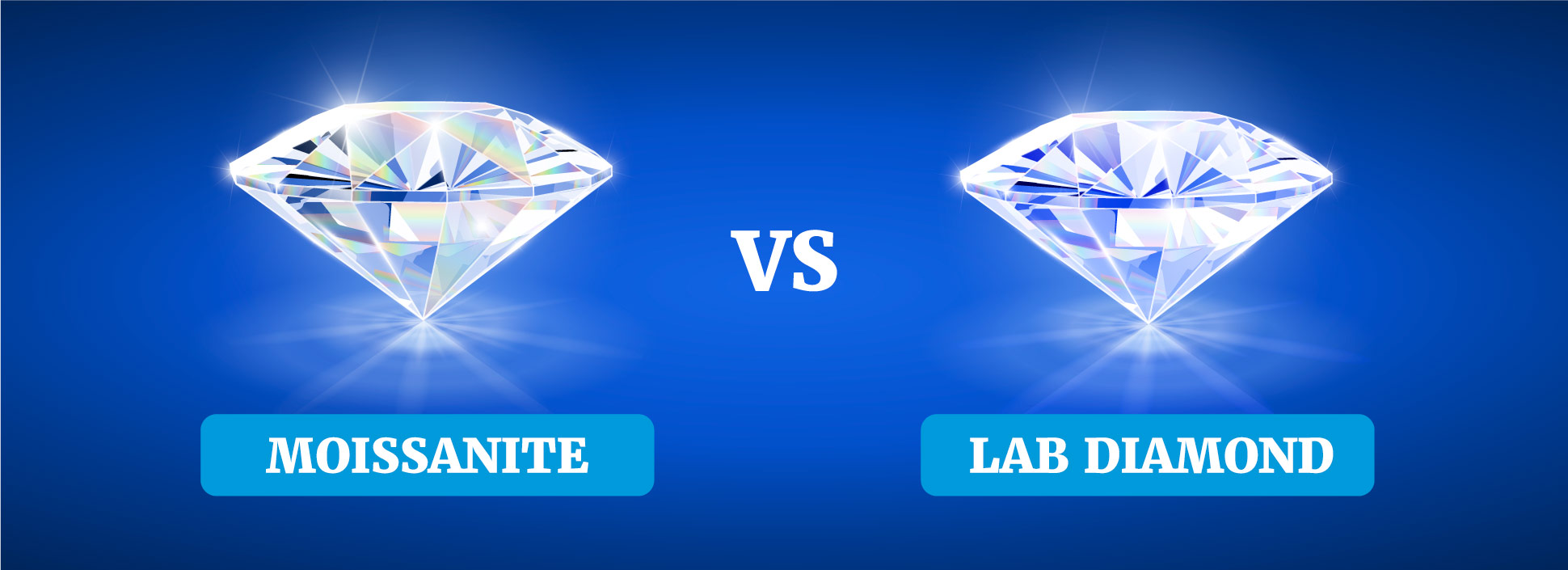When it comes to choosing the perfect gemstone for an engagement ring or fine jewelry, the debate of moissanite vs diamond has become increasingly popular. With the rise of man-made diamonds, buyers now have even more options to consider. Understanding the differences between moissanite, natural diamonds, and synthetic diamonds can help you make an informed decision that suits your style, budget, and ethical concerns.
What is Moissanite?man made diamonds
Moissanite is a gemstone that was first discovered in a meteor crater by scientist Henri Moissan in 1893. While naturally occurring moissanite is rare, today’s moissanite is lab-created. When comparing moissanite vs diamond, moissanite stands out for its exceptional brilliance, fire, and affordability. Unlike natural or man-made diamonds, moissanite has a unique sparkle due to its high refractive index. Although moissanite resembles diamonds, it is a silicon carbide crystal, making it distinct in both composition and optical properties.
Understanding Diamonds and Their Types
Diamonds, both natural and lab-grown, are made of pure carbon. The primary distinction in moissanite vs diamond lies in their structure and formation. Natural diamonds are formed deep within the earth over millions of years, while man-made diamonds are created in controlled environments using advanced technological processes. Whether natural or lab-grown, diamonds exhibit unmatched hardness, ranking 10 on the Mohs scale, making them ideal for daily wear.
Brilliance and Sparkle: Moissanite vs Diamond
One of the most debated aspects in the discussion of moissanite vs diamond is brilliance. Moissanite is known for its rainbow-like sparkle, often more intense than that of a diamond. Diamonds, whether natural or man-made diamonds, reflect white light with classic elegance. This difference in brilliance is a personal preference, with some appreciating moissanite’s fire while others favor the understated glow of a diamond.
Durability and Hardness Comparison
Durability plays a crucial role when selecting a gemstone, especially for engagement rings. The moissanite vs diamond debate includes considerations of hardness and resistance to scratching. While diamonds, including man-made diamonds, are the hardest known mineral at a 10 on the Mohs scale, moissanite follows closely behind at 9.25. This makes both gemstones highly durable, ensuring longevity with proper care.
Price Differences: Moissanite vs Diamond
A major factor influencing buyers in the moissanite vs diamond debate is price. Moissanite is significantly more affordable than both natural and man-made diamonds. A high-quality moissanite stone costs a fraction of a diamond of similar size and appearance. Man-made diamonds also tend to be less expensive than natural diamonds but are still pricier than moissanite. Budget-conscious buyers often choose moissanite for its affordability and similar aesthetic to diamonds.
Ethical Considerations and Sustainability
Ethical concerns are increasingly influencing jewelry buyers. When evaluating man made diamonds, many consumers appreciate that moissanite is exclusively lab-created, eliminating any connection to conflict mining. Man-made diamonds also offer an ethical alternative to mined diamonds, as they require fewer natural resources and do not contribute to environmental destruction. Those seeking a sustainable and conflict-free choice often prefer either moissanite or man-made diamonds over traditional mined diamonds.
Color and Clarity Differences
Color and clarity are essential factors when choosing between moissanite vs diamond. Moissanite is usually available in near-colorless or slightly tinted varieties. High-quality man-made diamonds are often created with excellent clarity and minimal inclusions. While natural diamonds may have imperfections, man-made diamonds are engineered to appear flawless. Moissanite is known for its eye-clean appearance, making it an attractive option for those who prioritize clarity.
Resale Value: What to Expect
Another important consideration in the moissanite vs diamond debate is resale value. Diamonds, whether natural or man-made diamonds, tend to retain some resale value, though lab-grown diamonds depreciate faster. Moissanite, on the other hand, has a lower resale value compared to diamonds. Buyers primarily choose moissanite for its beauty and affordability rather than investment potential. If resale value is a concern, natural diamonds remain the best option.
Which is the Best Choice?
Deciding between moissanite vs diamond ultimately depends on personal preference, budget, and ethical considerations. If you prioritize brilliance, affordability, and sustainability, moissanite is an excellent choice. If you prefer the timeless appeal and higher resale value of diamonds, man-made diamonds or natural diamonds may be the better option. Regardless of the choice, both moissanite and man-made diamonds offer stunning, durable, and ethical alternatives to traditional mined diamonds.
Final Thoughts
The increasing popularity of moissanite vs diamond discussions highlights the evolving preferences of modern buyers. With advancements in technology, man-made diamonds have become a viable alternative to mined diamonds, offering the same visual appeal with ethical advantages. Whether opting for moissanite or man-made diamonds, today’s consumers can enjoy beautiful, high-quality gemstones without compromising on sustainability or affordability.

